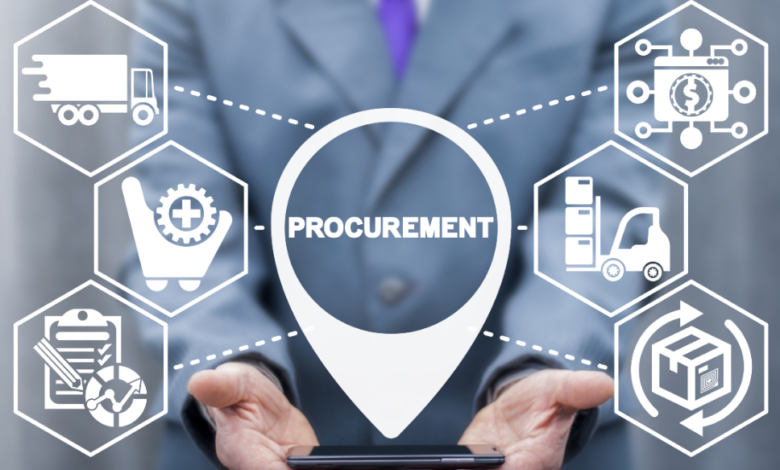When Is the Right Time to Upgrade Your Procurement Software?

In the contemporary world, undergoing frequent changes in the business environment, organizations are always trying to find means to achieve efficiency in their operations as well as cut down the cost of doing business. A very vital aspect that should be looked into is the process of procurement, which is the main spine of supply chain management. With the evolution of technology and business needs, most companies are left wondering whether the procurement software they are using continues to serve them or whether it is about time they upgrade to a new one.
A procurement software upgrade is not a decision that should be made lightly. It entails a huge investment of time, money, and resources. It is important to know when to upgrade by observing those signs so that you can make informed decisions that will benefit your organization in the long term.
Indications Your System Is Becoming Outdated
The speed of modern business is higher than ever before, and the procurement processes cannot afford to remain behind the trends. Once your existing procurement software starts becoming obsolete, it may affect the competitiveness of your organization to a serious degree. Among the most blatant signs is when your system cannot cope with a higher volume of transactions or cannot integrate itself effectively with other business applications.
The second obvious indication is that your team wastes a lot of time on manually operating tasks that ought to be automated. When you find yourself seriously compromising with your procurement software to get simple tasks done, it is probably high time you thought of an upgrade. Also, when the system you have does not provide reporting and analytics to make data-driven decisions, then you are not taking advantage of valuable information that can enhance your procurement strategy.
Business Development and Technology Development
Technological development is highly advance and hence the potential of the procurement software continues to rise. Artificial intelligence, machine learning and advanced analytics are new features that are becoming common across modern solutions. When the available system fails to support these functions, you will be in a disadvantage relative to other organizations that use the state-of-art technology.
The growth of business usually surpasses the capacity of current systems. The bigger your organization grows, the more complicated your procurement requirements, and the more advanced the tools you need to manage the relationship with more suppliers, the larger the volumes of transactions, and the more complicated the approval process. Once your existing procurement software reaches the limits of scaling your business, it slows you down instead of enabling you.
ROI and Cost Considerations Analysis
Although the costs involved in the initial upgrade of procurement software can be quite off-putting, in the long run, they are usually worth the outlay. It is best that organizations carry out extensive cost-benefit analyses so that they can know when the best time to carry out an upgrade is. In this analysis, the direct costs of new software should be presented along with the hidden costs of supporting old systems.
The older systems often need more maintenance, support, and workarounds which are costly in the long run. Also, outdated technology may result in inefficient processes that cause higher operational costs, savings opportunities, and lower productivity levels. Once such factors are taken into consideration the business case for upgrading procurement software can be very attractive.
Usability and Adoption Attributes
User satisfaction and adoption are critical to the success of any procurement software. Is your existing system cumbersome to operate, does it need a lot of training or does it aggravate the users with its interface? Then it might be driving a wedge instead of assisting your procurement activities. Procurement software is modern and focuses on the user experience, procurement software is easy to use, with an intuitive interface and simplified workflows that help employees get their jobs done faster.
A vendor portal is especially vital when it comes to sustaining positive relationships with suppliers. Your existing system might be hurting your supplier network in case it is challenging the suppliers to communicate with your organization, submit quotes, or maintain their accounts. Replacing the system with an easier-to-use one can also increase supplier satisfaction and possibly result in lower prices and service levels.
Market Conditions and Competitive Advantages
The external market conditions may affect the most appropriate time to upgrade the procurement software. In times of economic uncertainty, organizations can delay major upgrades in their systems in order to conserve resources. Nevertheless, the same circumstances could cause the performance improvements of updated systems to be all the more lucrative.
Competitive influences the pressure of competitors is also a factor in determining the time to upgrade. When your competitors are getting benefits due to better procurement technology, then you might need to upgrade as soon as possible to stay in the market. State-of-the-art procurement software may also offer a competitive edge due to the establishment of a better relationship with suppliers, quicker procurement cycles, or enhanced cost control.
Planning and Implementation Considerations
End productive upgrades of procurement software must be well-planned and timed. When planning an upgrade, the organizations should take into consideration their current workload, future projects and the availability of resources. Relatively stable times are normally the best to undertake an upgrade because teams can work on the implementation and training without having other urgent matters vying with it.
To have successful upgrades, change management is essential. When upgrading, teams require some time to get used to new systems and processes and such considerations should be reflected when deciding on the timing of upgrades. Sufficient transition support and training can make a significant contribution to the success of an upgrade.
Conclusion
Deciding when to upgrade your procurement software is a question that must be looked at keenly, with various other factors such as the performance of the system, business developments, cost, and market. Although there is no blanket response that can determine when the upgrades need to be done, those organizations that constantly evaluate their procurement software with respect to the contemporary requirements and future needs are in a better place in making decisions.




